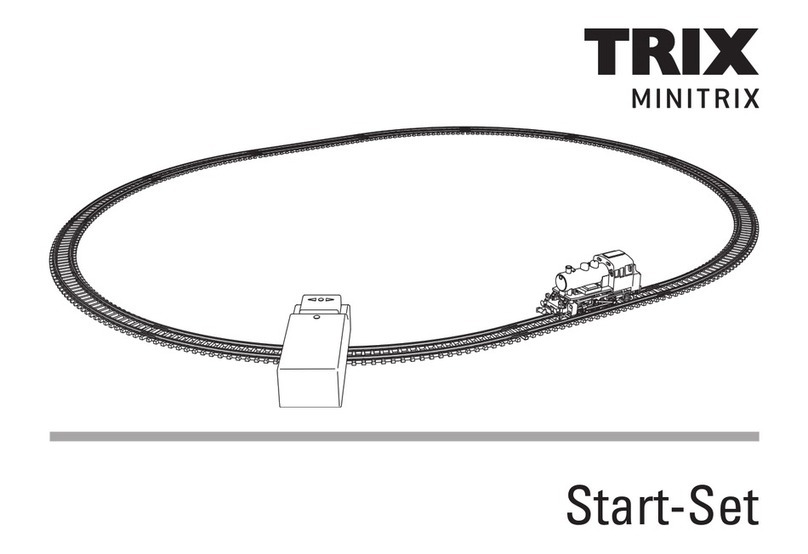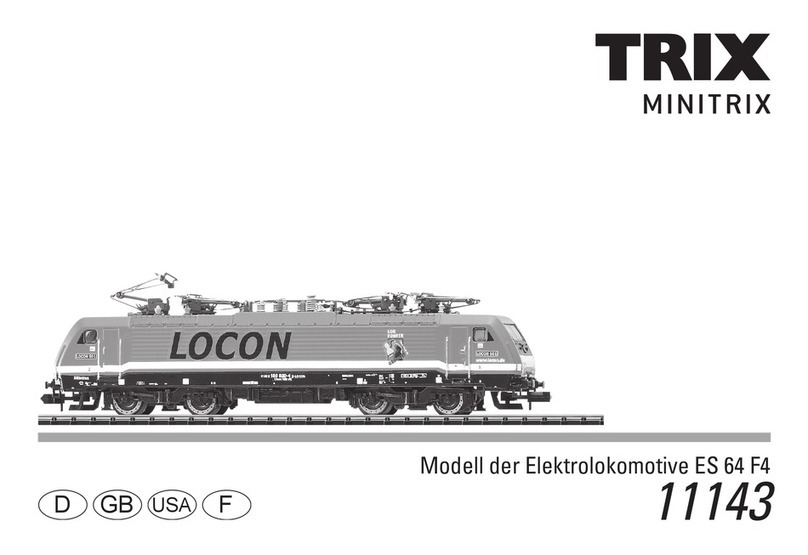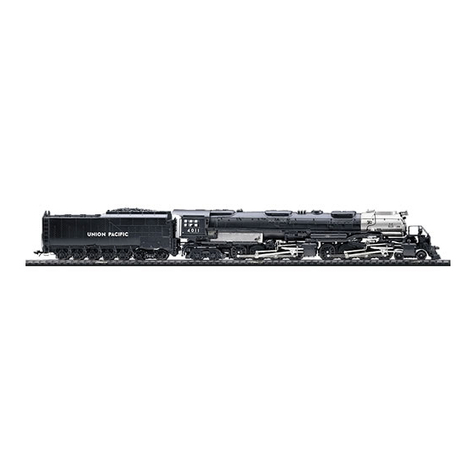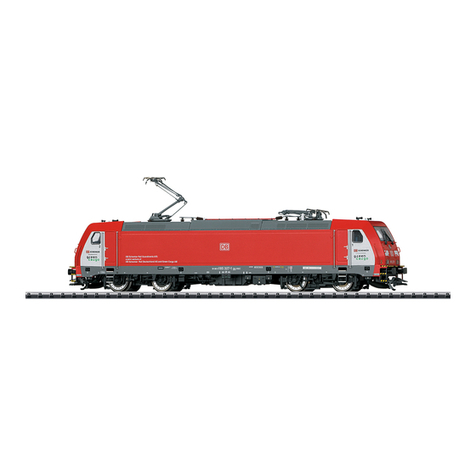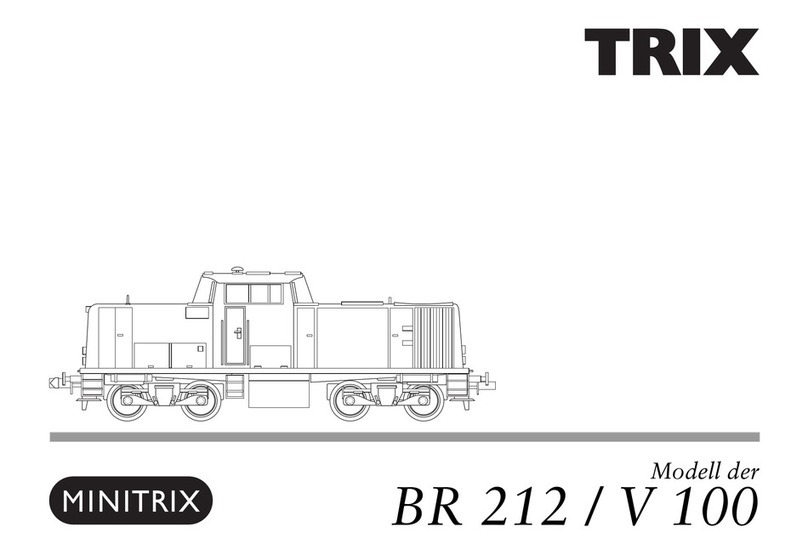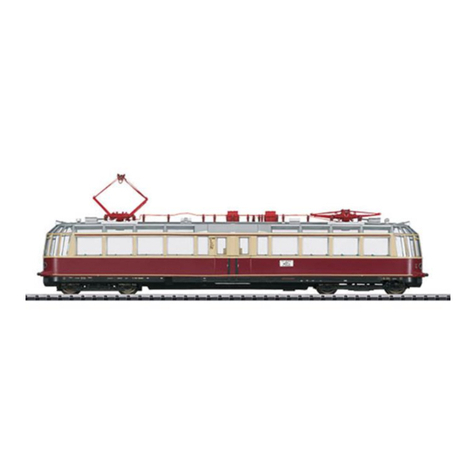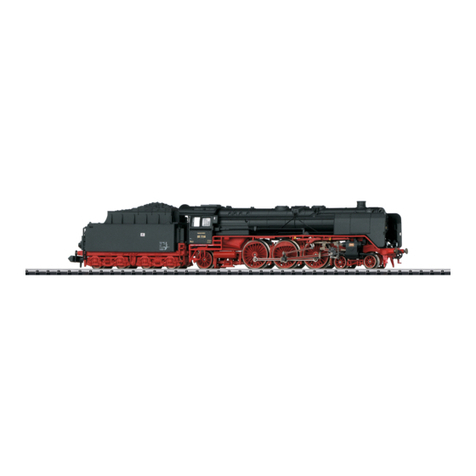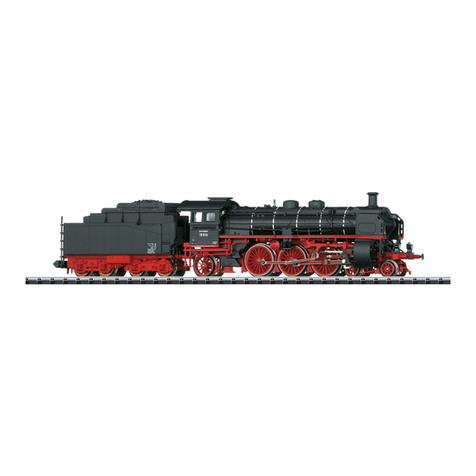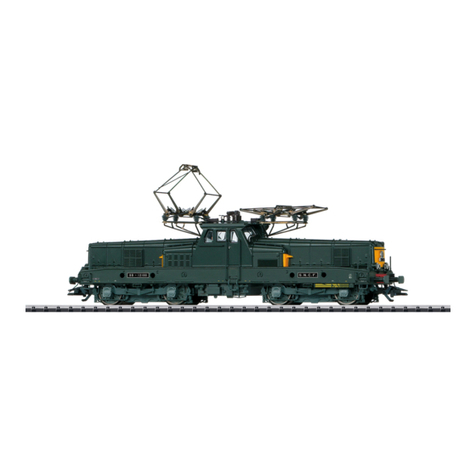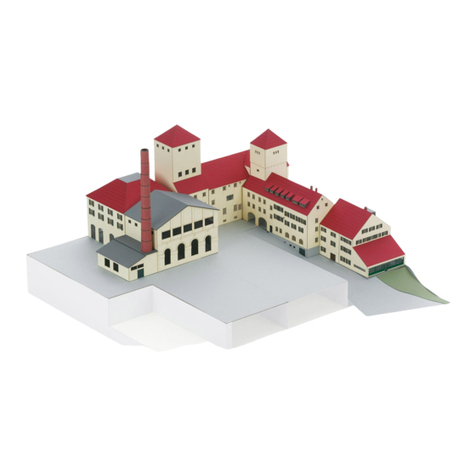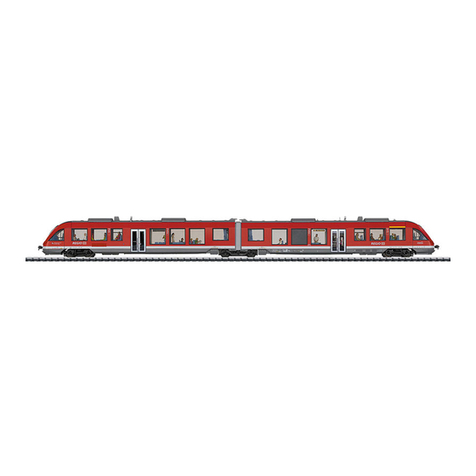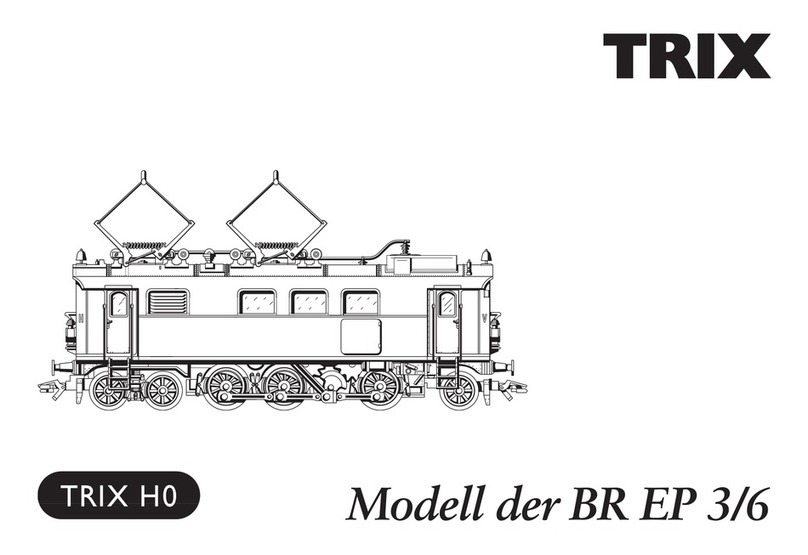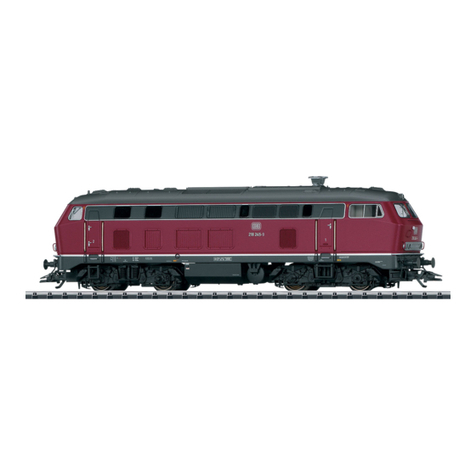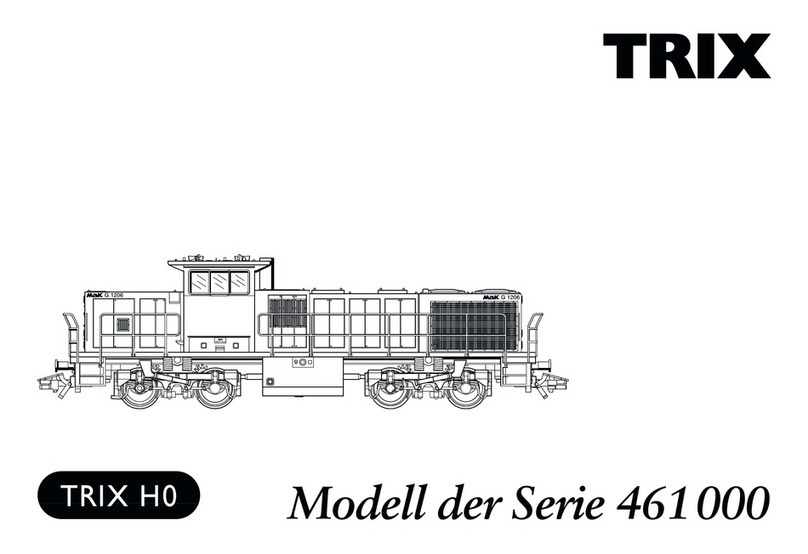5
Informations concernant la locomotive réelle
Du milieu à la fin des années 1930, les chemins de fer fé-
déraux suisses (CFF) mirent en service la célèbre «Flèche
Rouge» de la série CLe 2/4. Les exigences relatives à ces
automotrices légères allaient du trafic rapide aux voyages
organisés prestigieux - entre autres sur la ligne du Saint-Go-
thard - en passant par le trafic régional.
Avec une vitesse maximale de 125 km/h, les 7 Flèches rou-
ges firent honneur à leur nom, dépassant de loin le reste du
trafic ferroviaire suisse qui devait se contenter de 100 km/h.
La construction légère était tout aussi innovante que le mé-
canisme à air comprimé pour l’ouverture et la fermeture des
portes coulissantes télescopiques. Les bogies très écartés
et la caisse surbaissée devaient garantir un roulement stable
pour ces véhicules de 33 tonnes seulement. Les deux avant-
corps aérodynamiques logeaient d’un côté le transformateur
à bain d’huile et de l’autre côté, les deux moteurs de traction
branchés en série ; dans le compartiment voyageurs se trou-
vaient deux cabines de conduite dans lesquelles le mécani-
cien pouvait travailler assis; le banc à ses côtés offrait place
encore à deux voyageurs qui pouvaient jouir pleinement de
la vue sur la ligne.
Durant leur vie active, les Flèches rouges connurent plu-
sieurs transformations, innovations techniques ainsi que
plusieurs réimmatriculations ; c’est en tant que RBe 2/4 que
la première fut réformée et ferraillée en 1966. Jusqu’en 1974,
2 véhicules restèrent dans le parc des CFF, dont un fut vendu
aux OeBB (Oensingen Balsthal Bahn) et circula encore plu-
sieurs années dans une inhabituelle livrée bleue.
Informatie van het voorbeeld
Midden tot eind jaren 1930 stelden de Schweizerische Bun-
desbahnen (SBB) de beroemde Rote Pfeile van de serie
CLe 2/4 in dienst. Het eisenpakket van het lichte treinstel reik-
te van snelverkeer en regionale inzet tot en met prestigieuze
gezelschapsritten, onder andere over de Gotthardlijn.
De 7 Rote Pfeile deden hun naam alle eer aan, maar ze waren
met hun maximumsnelheid van 125 km/h het overige spoor-
verkeer Zwitserland, dat met 100 km/h maximumsnelheid toe
moest, huizenhoog de baas. De lichte constructie was even
baanbrekend als het persluchtmechanisme om de telesco-
pische schuifdeuren te kunnen openen en sluiten. De ver uit
elkaar getrokken draaistellen en de laag gelegde opbouw
moesten een rustige loop voor de slechts 33 ton zware voer-
tuigen garanderen. In de beide gestroomlijnde voorbouwen
waren aan de ene kant de oliegekoelde transformator en aan
de andere kant de beide, in serie geschakelde rijmotoren on-
dergebracht en in de reizigersruimte bevonden zich twee ca-
bines, waarin de machinist zittend zijn arbeid verrichten kon;
op de bank naast hem vonden nog 2 andere reizigers plaats,
die van het perfecte uitzicht op het traject genoten.
De Rote Pfeile beleefden in hun actieve periode meerdere
verbouwingen en technische vernieuwingen en ze werden
als type meerdere keren herbenoemd: als RBe 2/4 werd de
eerste in 1966 buiten dienst gesteld en verschroot. Tot 1974
bleven 2 voertuigen in het bestand van de SBB, waarvan er
een aan de OeBB (Oensingen Balsthal Bahn) verkocht werd
en nog meerdere jaren in een ongewone, blauwe kleurstel-
ling onderweg was.
